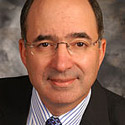12:10 PM
Against the Odds, the NYSE Has Successfully Implemented the Hybrid, Acquired Euronext and Become More Profitable
I am amazed. Well, not amazed, but pleasantly surprised. They overcame the skeptics. The NYSE pulled off the acquisition of a lifetime (Euronext), implemented the Hybrid, cut costs to the bone, increased revenue, became profitable, and held off virtually all of the upstart/recapitalized regional exchanges and ECNs. Who would have thunk it (other than John Thain)? I thought it was beyond odds. But I guess everyone has to eat a bit of crow every once in a while.
So why was this successful when on paper the odds looked so overwhelming? Why didn't liquidity run out to the regionals? Why are the only major, not-aligned ECNs (BATS and DirectEdge) increasing market share when everyone said that the ECN value model was dead? Is it just that Reg NMS has not been fully implemented, or is it something else?
Certainly, technology has something to do with it. The Archipelago and SIAC/NYSE technology groups combined to ensure a strong hybrid launch. The Hybrid has reduced specialist interaction, and that has been received well. In fact, interaction with flow is down so much that specialists and floor brokers alike have announced that they are reducing their ranks. The NYSE has begun to shutter the first of its five trading floors, and my guess is there is more of that to come before year-end.
However, technology and cost must not be everything, as the Hybrid is still slower and more expensive than other venues. One could say that the NYSE's dominant market share of listed names comes from its legacy. But with the amount of DMA, algorithms and smart order routing (more than 50 percent of order flow), that does not make much sense -- with the amount of smart order routing and rebate schemes offered by other venues, liquidity should be drawn from the slower and more expensive venues to the faster and less expensive venues. But that is not what we have seen.
So what is at work? The answer may just be liquidity. With market share of more than 60 percent of listed shares, the NYSE is still the largest U.S. liquidity pool and maybe the largest on the globe. If your job is to execute orders, how can you not interact with the NYSE?
The NYSE may be slow, it may be old and stodgy, and the specialists may not do the right thing all the time, but at the end of the day, two things need to happen: First, large institutional orders need to be filled; and second, fiduciaries need to defend their execution decisions to their retail clients. And unfortunately for the regionals, based on investors' recognition of the NYSE's strong brand name alone, it may not make for an easy conversation if your retail order was executed on a lesser-known venue.
The other challenge for regionals is that the market only can be so competitive. If spreads in the most-liquid stocks are at pennies, then how can a less-liquid market become top of book? In addition, if the quote is tied (both venues are trading at the same price), where will you go first? This is actually a very important issue. If liquidity is consistently pulled from the NYSE first, then by definition an order placed in the regional market will always be in the back of the queue, even if it is top of book. In this instance a limit order would have a greater chance of getting executed in the more-liquid market (the NYSE) than a top-of-book limit on a regional -- even at the same price.
This could very well be why we have not seen significant erosion of New York's market share. And given the increase in volume predicted from accelerating execution speed, increasing the number of black box executions, and the cost reductions implemented by Thain, we may not have seen the end of the NYSE yet.
Larry Tabb is the founder and CEO of TABB Group, the financial markets' research and strategic advisory firm focused exclusively on capital markets. Founded in 2003 and based on the interview-based research methodology of "first-person knowledge" he developed, TABB Group ... View Full Bio



























